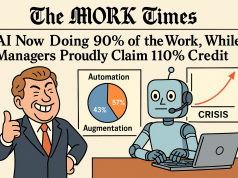In the age of digital transformation, the way we work, connect, and engage with one another in professional environments is rapidly evolving. However, one aspect of the workplace that remains unfalteringly human is the onboarding of new employees. Onboarding is the first step in building a strong employer-employee relationship, and despite the rise of advanced technologies and automated systems, it still demands a personalized approach to ensure a seamless transition into the company culture and ethos.
As companies strive to integrate digital efficiencies into their operational strategies, the challenge lies in finding the sweet spot between leveraging technology and maintaining the essential human touch. The onboarding process serves not only to familiarize new hires with their responsibilities but also to embed them within the company’s community and values — a task that is inherently relational and deeply personal.
The emergence of remote work has prompted a surge in virtual introduction tools. From video conferencing platforms to interactive training modules, technology has enabled businesses to conduct comprehensive onboarding programs irrespective of geographical constraints. However, this shift towards virtual onboarding has highlighted a fundamental truth: technology can facilitate, but it cannot replace the nuanced complexities of human interaction.
Case studies from industry leaders demonstrate that the most successful onboarding strategies are those that blend digital methodology with personalized engagement. For instance, a multinational tech giant has implemented a ‘buddy system’, pairing new hires with current employees to provide mentorship, feedback, and a sense of belonging from day one. This is complemented by a suite of digital resources that empower new team members to learn at their own pace, thereby marrying efficiency with personalization.
The tools for remote onboarding are becoming increasingly sophisticated. From AI-driven chatbots that answer new hire queries in real-time to virtual reality tours of the office space, the possibilities for creative and engaging digital onboarding experiences are vast. Yet these tools are most effective when they serve to augment, rather than replace, the human elements of mentorship, community-building, and personalized support.
For recruiters looking to personalize the onboarding experience while still taking advantage of digital efficiencies, actionable tips include:
1. Establishing personal connections early on, such as pre-first day communications that convey warmth and welcome.
2. Using video calls strategically to maintain face-to-face interaction, ensuring that new employees feel seen and heard.
3. Setting up virtual meet-and-greets with key team members to build networks and relationships beyond the immediate working team.
4. Providing platforms for social interaction, such as virtual coffee breaks or team lunches, to foster a sense of belonging.
5. Developing feedback mechanisms to continuously assess and improve the virtual onboarding experience.
In conclusion, as we navigate the complexities of onboarding in the digital era, it is clear that the most successful strategies are those that recognize the irreplaceable value of the human element. By thoughtfully integrating technology into personalized recruitment practices, companies can cultivate a workforce that is not only well-informed and proficient but also deeply engaged and connected to the organizational culture and community — a true testament to the enduring power of the personal touch in the digital age.



























